Best Back Exercises at Home Without Weights: 8 Moves to Tone your Back
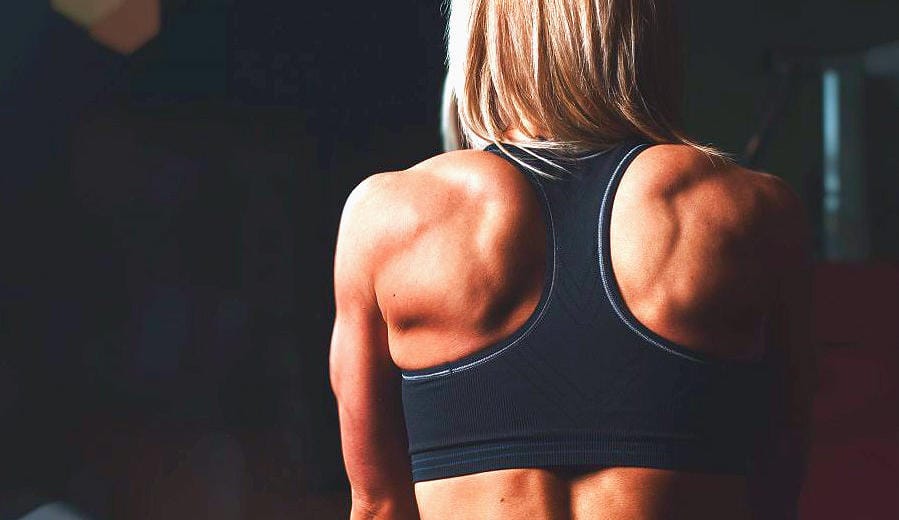
Most of the time, your back is in motion. Nearly every movement you perform all throughout the day you use your back. Bending over to tie your shoes, reaching your things up in a cabinet, and carrying your backpack are few of the course you do every single day. However, the back is one of the most commonly injured parts of the body for all age groups. Thus, your back is most crucial to maintaining its health and shape.
A strong back means a healthy back. Impotent back muscles often lead to poor posture. It could also lead to back pain which can affect your performance in your favorite sport or workout. When you have a strong back muscle, it supports your spine, improves your posture and enables you to bend, flex and rotate your torso with ease.
Related: Muscles Involved in Dead Bug Exercise
Main Back Muscle Anatomy
It is important to become familiar with the locations and functions of the main back muscles. This is to help you optimize your back exercises and workouts. Back muscles include your arms, shoulder blades, and spine.
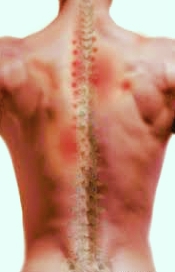
The spine is the main part of your back. It consists of 33 bones called vertebrae. Vertebrae are stacked on each other and form four regions such as the cervical spine, the thoracic spine, the lumbar region, and the sacrum region.
Oftentimes, we tend to disregard the form and functions of the spine, until they become the source of pain. Strong bones and muscles, flexible ligaments and tendons, and delicate nerves contribute to a healthy spine.
Curves Improve Spinal Column Strength
The spinal column also known as your backbone is a strong yet flexible multipurpose structure. It holds the weight of your head and torso and allows you to move in many directions. Each bone within an area has its own number.
The spine is naturally curved. These curves make the spinal column stronger, help absorb shock from running and jumping, and help you maintain your balance. The size of the curves varies by individuals, but excessive curves can cause problems.
The Rhomboids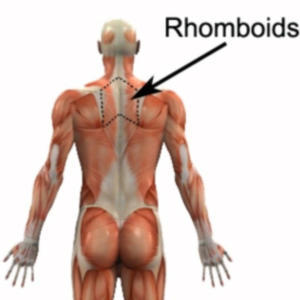
The rhomboids are mid-back muscles which play an essential role in scapular retraction. It is the pulling of the shoulder blades in toward the spine. Scapular retraction is vital in stabilizing the shoulders and upper back during weight training, and it greatly improves your posture. The best way to train the rhomboids is through back exercises emphasizing rowing, or horizontal pulling.
Guidelines for Back Exercises
Most of the best back exercises focus on two types of pulling motions: vertical pulling and horizontal pulling. Horizontal pulling like any pulling that is horizontal to the body; such as the motion to pull a drawer open or perform a bent over row if you are already familiar with that back exercise. On the other hand, Vertical pulling is pulling along a parallel line with the body, such as doing a pull-up exercise.
You must split your time and focus between vertical pulling and horizontal pulling exercises to maximize your results. Advanced bodybuilders recognize the importance of including both types of pulling and may even train the different types of pulling on different days as part of a split routine to truly maximize their backs.
Why Is Back training that important?
The back is one of the hardest body parts to train, next to legs. Not only the fact that it is so energy draining when trained properly but the fact that you can’t see your back when training it and that it is very hard to focus on. It is very important to train your back muscles for posture because most of us sit all day long at work, and our shoulders tend to roll forward.
Most people who do workout focus on their chest in the gym, which will give them muscle imbalances as well as more rounding of the shoulders. This will create that slouchy “ape” look when they stand. You need to fix this by doing more pulling exercises of the upper back, traps, lats and also your rear deltoids (part of the shoulder muscles).
Working out Your Back Without Weights at Home
Performing back exercises will strengthen your back and it will also help you to support your body. This will help you carry it more efficiently. A stronger back promotes better posture and prevents back pain, as mentioned. There are many varieties of exercises you can do to work out your back without weights. Many exercises that use few or no items at home that target the back muscles. Check out here the 10 best back moves to tone your back.
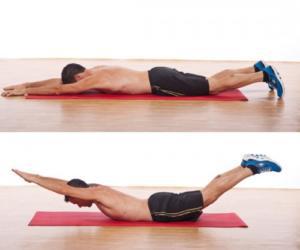
-
Superman
The Superman exercise is perfect for a workout your abs, and your back. This exercise lets you lift your arms and legs off the ground as if you were flying. Practice this exercise a few times a week to build lower back strength, prevent back pain and improve your posture.
To perform: Remember to exhale as you lift your arms and legs up off the ground. Then, after a few seconds of holding your core in, inhale, as you lower your arms and legs back down.
- Lie face down on an exercise mat with your legs together and your arms extended over your head.
- Keeping your core muscles contracted, lift your arms, chest, and legs off the mat. Hold for 1 to 5 seconds at the top, then lower back down.
- Keep the neck long and in line with the spine. Pull the shoulder blades together.
- Exhale as you rise up, inhale as you lower down. Continue to breathe during the hold, taking shallow breaths.
- Use the back muscles rather than the glutes to power the lift.
-
Twister
The back twist stretch is great for the lower back and spine. This exercise targets back, abs, hips, butt, and thighs.
To perform:
- Lying on the floor, place your left leg over your right leg.
- Using your right hand, gently pull your right knee towards the floor, twisting your spine and keeping the left arm straight out, hips and shoulders on the floor. Switch sides.
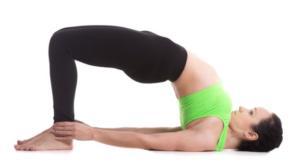
-
Marching Bridge
This move teaches you to stabilize the pelvis as the legs move and are great for runners and for preventing low back pain.
To perform:
- Lie on your back with your knees bent and your feet flat on the floor.
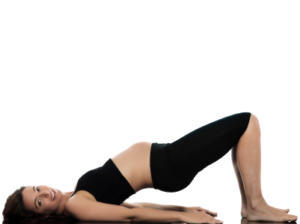
- Extend your arms alongside your body with the palms down.
- Press into the feet and lift your hips up. Keeping your core contracted, lift one foot off the floor at a time, place it back down, then lift the other foot.
- Continue alternating, or marching in place.
Tips: This is also a great glute exercise, but avoid letting your glutes do all the work. If you feel your glutes squeezing together, release them. You also want to avoid arching your lower back. Once you’ve mastered lifting each foot a few inches off the ground, you can progress to extending the lifted leg before setting the foot down again.
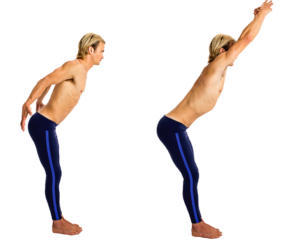
-
Hip Hinge
Practicing how to hinge at the hip is one of the simple, yet brilliant rehab exercises. It helps not only hip socket problems but chronic lower back as well. The hinge is a minimal knee bend and maximal hip bend.
To perform:
- Begin by standing tall with feet about shoulder-width apart. Keep your chest up, shoulder blades retracted in toward the spine and head up and facing forward.
- Bend your hips, moving them back as you bend over to near parallel. Keep your back arched and your cervical spine in proper alignment.
- Reverse the motion by extending through the hips with your glutes and hamstrings. Continue until you have returned to the starting position.
-
Atomic Burpee
Burpees are the move you love to hate. This advanced version kicks the heat up a notch with a sit-up, forcing you to engage your total body in a one-and-done fat blast. It targets back, shoulders, chest, abs, butt, and legs.
To perform:
- Lie down on your back, keeping your legs straight with your arms bent behind your head.
- Do a sit-up, but instead of lowering back down to the ground, jump to a standing position.
- Next comes the burpee. Jump down into a pushup position, complete one push-up, jump up to a squat, and jump straight up toward the ceiling.
- Do one to three sets of 10 reps.
-
Inverted Row
Inverted rows target the whole upper back, as well as the biceps. You can do them with rings or suspension trainers, but you can also use the edge of a sturdy table. If you use a table, your body will be positioned underneath the table.
To perform:
- Grasp the rings, strap or table edge with your hands a little wider than your shoulders.
- Bend your knees and place your feet flat on the floor. Contract your core muscles so that your body is in a straight line from your shoulders to your knees.
- Bend your elbows and pull up until your chest comes in contact with the handles or table edge. Lower back down to the start with control.
Tips: To make the exercise more challenging, walk your feet out. Focus on using your back muscles rather than your arms to do most of the work by squeezing your shoulder blades together as you pull. Exhale as you pull up and inhale on the way down.
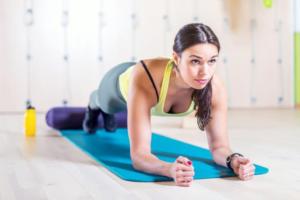
-
Plank
To perform:
- Lay on the ground on your stomach.
- Push yourself up on your toes and hands. Your arms should be shoulder-width apart and feet can be anywhere from shoulder-width apart to almost together (whatever works best for you).
- Your back should be flat, making a fairly even platform (or plank) from your shoulders to your heels; in other words, you back should not be arched or slumped towards the ground. This will help to keep your abs and back muscles engaged.
- A modification to this is, rather than staying up on your hands, drop down onto your elbows. Hold this position for 30-60 seconds.
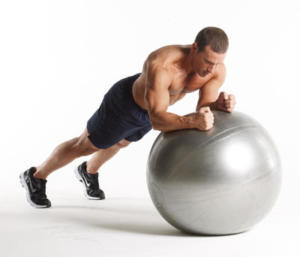
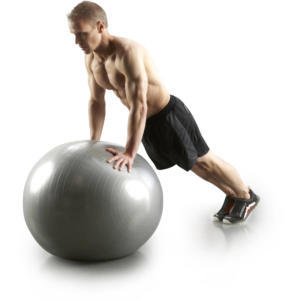
-
Back Exercise with Stability Ball
The exercise ball is effective in the rehabilitation of the back because it strengthens and develops the core body muscles that help to stabilize the spine. With the exercise ball, also called a Swiss ball or physio ball, an element of instability is introduced to the exercise that one would not normally get a floor exercise.
The body responds naturally and automatically to this instability to keep balanced on the exercise ball. Over time, the muscles used to keep in balance on the exercise ball become stronger.
To perform:
- Place the stability ball in front of you and kneel down in front of it.
- Place your forearms on top of the ball shoulder-width apart.
- Roll the ball with your forearms slowly away from you, allowing your body to drop towards the floor, as far as you are able to extend.
- Hold the position for three seconds, and then roll the ball towards your body to return to the starting position.
- Repeat the exercise for eight to ten repetitions.
-
Dolphin Kick
To perform:
- Place your body facing down on a bench so that the crease of your hip is at the end of the bench.
- Your feet should be resting on the ground with your hands firmly on the underside of the bench for support.
- Straighten out your legs while raising them up while engaging your abdominals, glutes, hips and spinal erectors in your low back. Your toes should be pointed away from your body and above your head at the top of the movement.
- Hold the static position for 5 counts by firmly engaging nearly every muscle in your body, before dropping the feet slightly below the bench and contracting again for 4 additional reps.
- Repeat for 3 sets of 5 reps, with 30-60 seconds of rest between sets.
Lower Back Exercises Matter
Whether you are a bodybuilder, an athlete, a power trainer or even someone going through rehabilitation, a trainer or therapist may have prescribed some lower back exercises. These are set to deal with back pain or as part of routine training for injury prevention and better overall body capacity. Training the lower back can be a powerful tool for preventing many kinds of back pain.
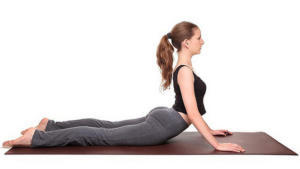
Lower back exercises even support the daily activities of sitting and standing that accompany many modern job roles. That makes them even more crucial to an even wider spectrum of people. See what you can do to add lower back exercises to your training regimen, to get more in injury protection and overall body response.
What Are the Benefits of Back Exercises?
Back exercises create a sculpted backside that looks good as you walk away. It has a deeper impact, too, as a strong back keeps your posture pristine and your spine healthy. You may not see your back easily in the mirror, but that doesn’t mean you should skip it in your workouts.
Spinal Support
The muscle groups in the lower back include stabilizers and spinal support muscles. Some of these muscle groups make up part of the “core” that benefits from toning and strengthening. The core, in a sense, carries the body and distributes pressure to help support the body’s internal infrastructure.
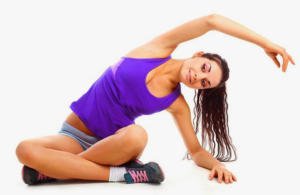
Structural Necessity
Neglecting your backside — particularly your back muscles — can have structural consequences for your body. A weak back means you don’t have the musculature to prevent rounded shoulders, which can cause neck and shoulder pain, as well as make you look as if you’re lacking confidence.
Strengthening the Abdomen and Hip Flexors
The lower back muscles support various body functions. Another essential element where lower back work comes in handy for preventing injury is in athletes. Though many strainer or coaches focus on the muscles that are specifically used within a contact sport. In professional leagues and in the top training rooms around the world, there’s also a specific focus on injury prevention, and that’s where lower back exercises may come into play.
A Balanced Body
It’s always a good idea to pay attention to the balance between your lower back and other core muscles. This is in relation to primary muscle groups in the chest and arms, especially while you are engaged in an intensive weight training program.
Working the muscles of your back in conjunction with those of your front also creates muscular balance. If you work the muscles at the front side at the expense of your back, you’ll likely develop muscle imbalances that only lead to injury and pain.
Aesthetic Benefit
Some trainees at the gym have a habit of only working the muscles they see in the mirror. These “mirror” muscles are the ones you flex in your reflection to prove you’re looking good — usually, your chest, biceps, fronts of the shoulders, quads, and abs.
However, if you’re a bodybuilder or figure competitor, all parts of your physique are up for judgment. Therefore, you need back exercises to provide symmetry between the front and back sides of your body.
